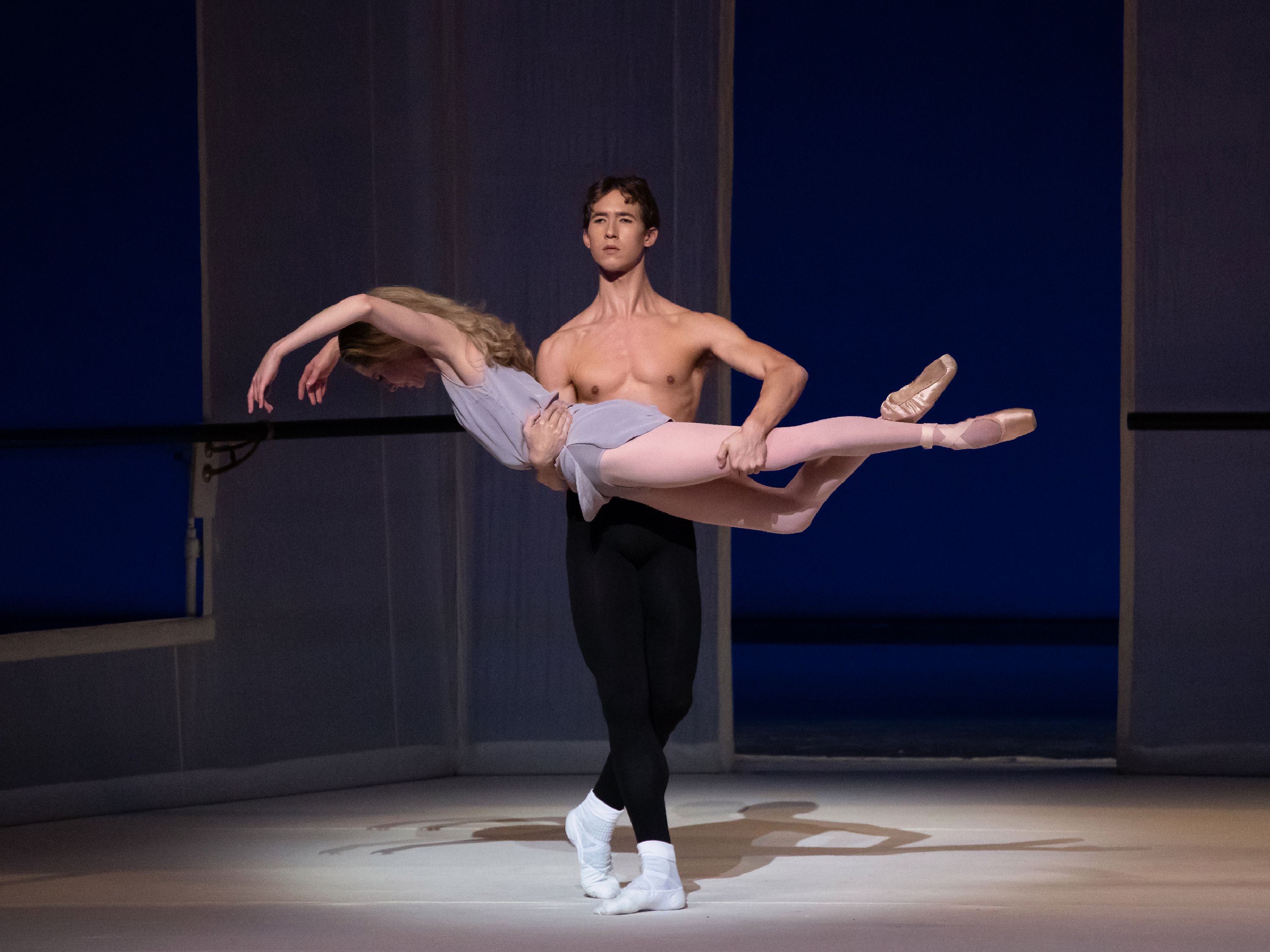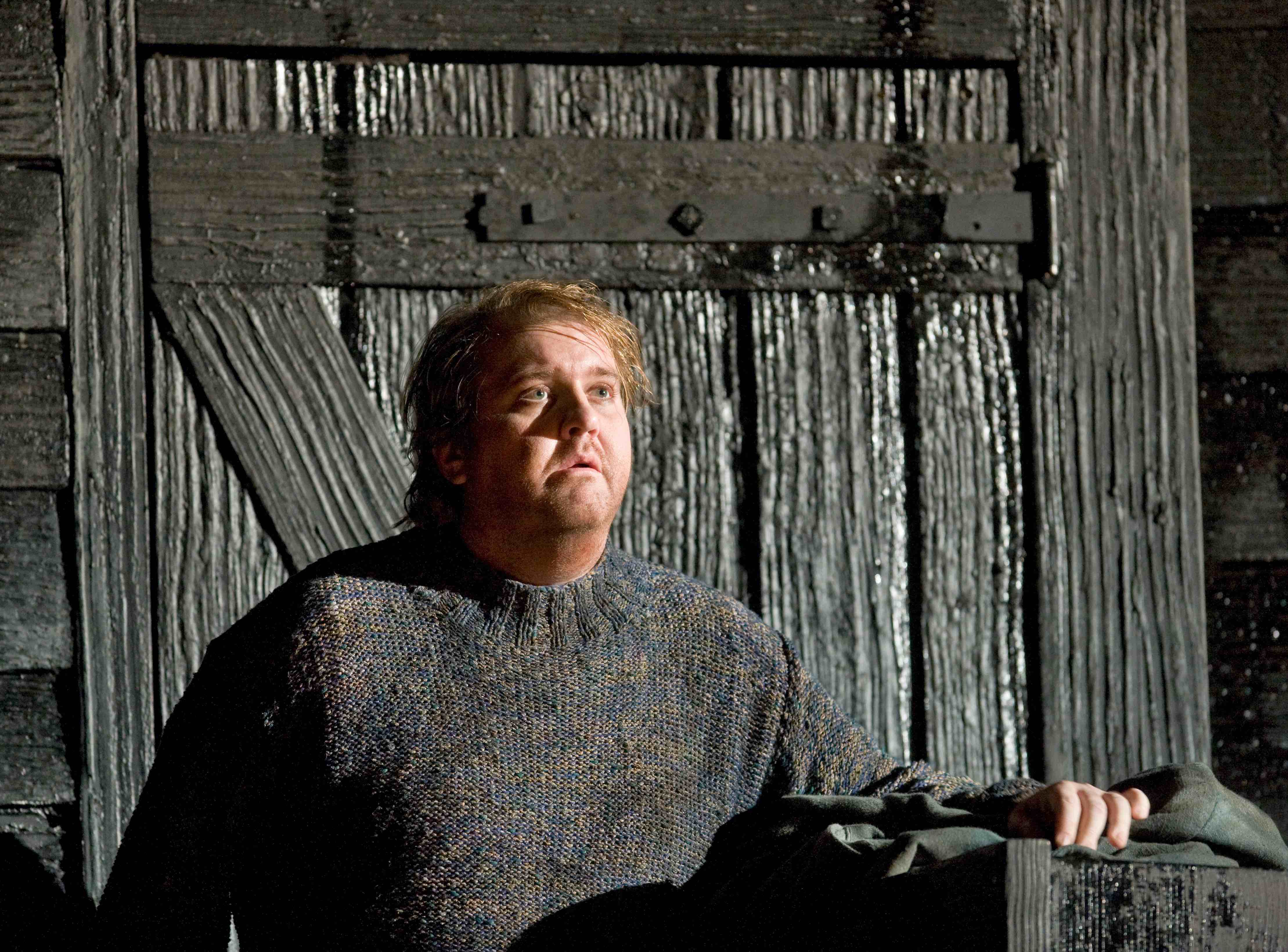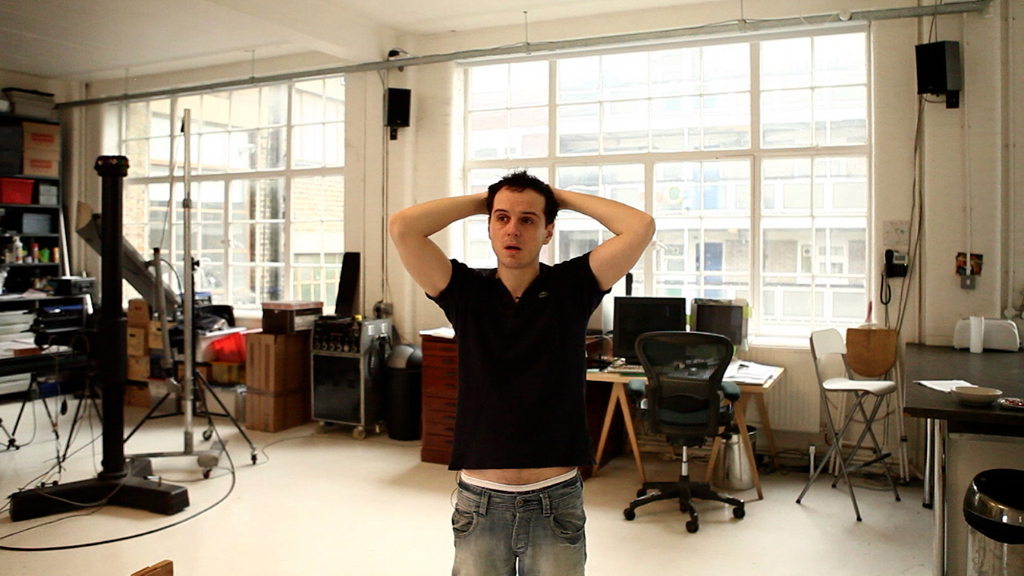VIEWPOINTS – Streaming Diary: City Ballet unleashes a diverse set, the Met’s 2008 PETER GRIMES stops the heart, and a pair of short plays disarm
- By drediman
- May 18, 2020
- No Comments
And so, Week Nine (!) of lockdown has come and gone in New York. As mentioned before, I’ve largely kept sane thanks to the performing arts content that I’ve been able to stream in lieu of being in the theater in person. Here’s a recap of some of last week’s streaming highlights.

Sterling Hyltin and Joseph Gordon of New York City Ballet in a 2018 performance of Jerome Robbins’ “Afternoon of a Faun”. Photo by Erin Baiano.
DANCE
New York City Ballet continued its Digital Spring Season last week with two programs, which were streamed online on Tuesday and Friday, per usual. The first was a delicious medley of highlights from five ballets (RECOMMENDED) – Sara Mearns danced with invigorating freshness in a 2018 performance of the “Spring” segment from The Four Seasons (choreographed by Jerome Robbins; composed by Giuseppe Verdi), Tiler Peck and Lauren King technically wowed in a 2016 performance of the “Theme and Variations” movement from Divertimento No. 15 (choreographed by George Balanchine; composed by Wolfgang Amadeus Mozart), Sterling Hyltin and Joseph Gordon were hypnotic and ethereal in a 2018 performance of Afternoon of a Faun (choreographed by Robbins; composed by Claude Debussy), Ask la Cour commanded the stage in a 2017 performance of “Third Variation: Phlegmatic” from The Four Temperaments (choreographed by Balanchine; music by Paul Hindemith), and, in a rare occurrence, Teresa Reichlen let her hair down in a 2018 performance of the rousing “Rondo” finale from Western Symphony (choreographed by Balanchine; music by Hershy Kay). If you couldn’t already tell, the program showcased the company’s astonishing diversity. Especially enchanting were Ms. Hyltin and Mr. Gordon, whose gorgeously modulated work as two soulful dancers in a ballet studio had me totally mesmerized in Robbins’ Afternoon of a Faun, the only complete ballet of the streamed set.
Later in the week, Justin Peck’s Pulcinella Variations (RECOMMENDED) – set to music by Igor Stravinsky – was the sole feature presentation. Created in 2017, the ballet distinguishes itself from other Peck works by largely staying away from intricately-constructed ensemble choreography (for which he has become beloved), instead pivoting his focus on creating solos and pas de deux for his company. Additionally, the performance, which was filmed in 2018, beautifully captured the piece’s earnest engagement with classical ballet forms, but from the contemporary perspective of Mr. Peck’s ever-active imagination (as manifested by Tsumori Chisato’s color-bursting costumes). The performance featured particularly spirited dancing from Ms. Hyltin, Ms. Pick, Indiana Woodward, Gonzalo Garcia, and Anthony Huxley.

Anthony Dean Griffey in a 2008 Metropolitan Opera performance of Benjamin Britten’s “Peter Grimes”. Photo by Ken Howard.
OPERA
The hands down highlight of this week’s opera viewings was a chance to catch, thanks to the Met’s Nightly Opera Streams, a heart-stopping 2008 performance of Benjamin Britten’s Peter Grimes (HIGHLY RECOMMENDED), an opera about a fisherman’s dubious role in the deaths of two of his young apprentices. The production is directed by John Doyle, who has made a name for himself in the theater world for his severely minimalist stagings, particularly of musical revivals. Luckily, his work on Peter Grimes – one of the indisputable landmarks of 20th century opera – doesn’t have the performers double as an onstage orchestra, as he (in)famously did in his Broadway revivals of Stephen Sondheim’s Sweeney Todd and Company. He does, however, provide laser-like focus on the title character’s gripping psychological journey. This effort is aided by Scott Pask’s suffocating, monolithic set, essentially a mammoth wall which moves upstage and downstage, as needed. As the misunderstood Peter Grimes, lyric tenor Anthony Dean Griffey was a revelation.
Despite his lumbering physical presence, there’s something inherently sweet-natured about Mr. Griffey’s persona. The tension between the performer’s innately pleasant disposition and the streaks of frustrated violence that occasionally erupt from the title character made for remarkably potent – even shattering – theater. As the trusting woman who could be Peter Grimes’ saving grace, soprano Patricia Racette delivered a solid performance, as expected from this star veteran. Thankfully, both Mr. Griffey and Ms. Racette shined vocally without sacrificing any of the dramatic details of Montagu Slate’s nuanced libretto. Britten’s brilliantly evocative score sounded ravishing as played and sung by the superb Met Orchestra (under the assured baton of Donald Runnicles) and the Met Chorus (a force of nature as the opera’s mob-like townspeople), respectively.
This week, I also caught a traditional 1980s staging of Richard Strauss’s Ariadne auf Naxos (RECOMMENDED). A curiosity of an opera which may not be everyone’s cup of tea, the performance nevertheless featured sparkling turns by the late dramatic soprano Jessye Norman and lyric soprano Kathleen Battle, both of whom had storied careers at the Met and were much loved by opera fans.

Andrew Scott in the 2011 film version of “Sea Wall” by Simon Stephens.
THEATER
When Simon Stephens’ Sea Wall played New York last year as the first part of a double-bill entitled Sea Wall/A Life – initially at the Public, then later on Broadway – I thought it was the stronger of the two one-man shows on display (A Life was penned by fellow British playwright Nick Payne). In Sea Wall, Mr. Stephens created a monologue that was structurally succinct yet panoramic in its encompassing of the human experience.
Since the aforementioned staging of Sea Wall starred a memorable and totally distinctive Tom Sturridge, I was hesitant to revisit Mr. Stephens’ work in the form of a 2011 film version (HIGHLY RECOMMENDED), which was made available for free streaming this past weekend. Why would I want to compromise my memory of Mr. Sturridge’s devastating performance? Nevertheless, because of some strong word of mouth and its manageable running time (the film clocks in at just over half an hour), I decided to give it a go. And boy, am I happy I did. Andrew Scott (many will recognize him as the Hot Priest in the hit television series Fleabag), for whom the play was originally written, is simply remarkable in the film. Whereas Mr. Sturridge played up the character’s idiosyncratic tics, Mr. Scott imbued his portrayal with an appealing everyman vibe, thereby heightening the heartbreaking tragedy of the play (no spoilers here!). Indeed, in this actor’s hands, I had a brand new appreciation of Mr. Stephens’ masterful, utterly haunting text, which Mr. Scott navigated with beguiling intimacy. Additionally, the close-ups afforded by film only magnified the inconsolable pain and existential crisis that permeates the work.
This past weekend, I was also disarmed by the Old Globe’s “production” of In-Zoom (RECOMMENDED), Bill Irwin’s honest attempt at recalibrating physical theater and comedy to the two-dimensional confines of our computer screens (notice the attention to detail placed on facial expressions). Much like What Do We Need to Talk About?, Richard Nelson’s coronavirus-era continuation of the Apple Family saga, Mr. Irwin’s 10-minute experiment attempts to redefine theater using the tools at our disposal. This is theater specifically created for the “current normal”, and its textures are far different from theater as we knew it before the pandemic. We all know that Mr. Irwin holds the title of American theater’s master clown. He’s joined in In-Zoom by Christopher Fitzgerald, a hugely talented comic actor who impressively held his own opposite Mr. Irwin. Together, they managed to charm and even move me with their self-referential, amusingly skittish performances.

 Copyright © 2024
Copyright © 2024
Leave a Reply